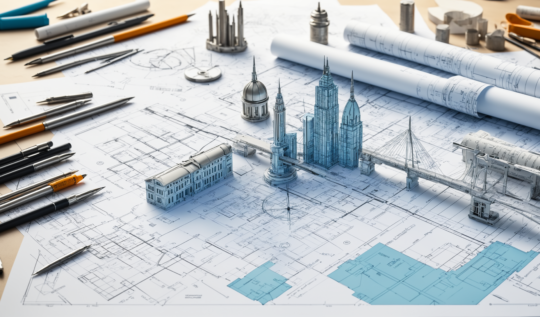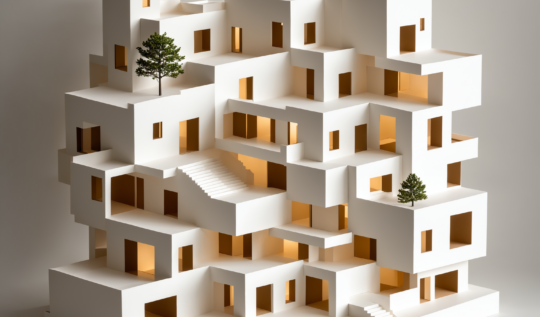Master Planning for Growth: Adapting Spaces Across Sectors
Master planning is more than a blueprint; it’s a strategic approach that ensures properties are ready to meet both current and future demands. Whether expanding a healthcare campus, accommodating growing student populations in schools, or upgrading hospitality spaces, master planning is about creating scalable, adaptable solutions that evolve with your needs. At UNITE – Architecture & Beyond, we specialize in crafting tailored master plans that drive growth and success across industries.
Key Challenges Across Sectors
As diverse as industries are, many share common challenges when it comes to growth. Here are some examples of how master planning addresses these unique needs:
1. Growth in Healthcare Campuses
Healthcare facilities face the ongoing challenge of balancing expansion with operational efficiency. Additional patient care facilities, parking lots, and specialized departments are often needed, but these must integrate seamlessly with existing workflows. Without a clear plan, growth can lead to disjointed layouts, inefficiencies, and bottlenecks.
2. Increasing Student Populations in Schools
Schools are tasked with accommodating more students while maintaining effective learning environments. Planning for future expansions, such as STEAM labs, flexible-use classrooms, and athletic facilities, must account for operational continuity. Construction often needs to occur without disrupting students or staff, adding complexity to the process.
3. Expanding Hospitality Services
For hotels, resorts, and other hospitality properties, guest expectations are always evolving. Whether it’s adding event spaces, updating amenities, or improving parking and access points, hospitality spaces must remain competitive while accommodating future upgrades and changes.
Solutions Through Master Planning
1. Phased Development for Scalability
Phased development allows properties to address immediate needs while maintaining the flexibility to grow. For instance, a healthcare campus might prioritize building an outpatient clinic today while leaving room to expand its emergency department or parking facilities in the future. This approach prevents overbuilding and ensures every phase aligns with long-term goals.
Learn more about how phased development strategies can future-proof properties in our post on How to Future-Proof Your Property with Strategic Master Planning.
2. Flexible Multi-Purpose Spaces
Designing spaces that can adapt to multiple uses is a cost-effective and forward-thinking solution. For example, a school cafeteria can double as a community event space, or a hotel ballroom can transition into a co-working hub. By creating flexible environments, properties can maximize their usability over time.
3. Leveraging Existing Property Potential
Through thorough site analysis, we identify opportunities to optimize underutilized spaces. This could mean converting an unused area into additional facilities or reimagining existing layouts to improve functionality. At UNITE, we believe every property holds untapped potential—master planning helps unlock it.
For strategies that balance adaptability with sustainability, check out our article, Practical Sustainability: Future-Proofing Designs Across Industries.
The Value of Site Visits
Why We Prioritize Site Visits
Visiting a property allows us to gain insights that no blueprint or virtual walkthrough can fully capture. Walking through an existing building or property enables us to see how spaces are currently used, identify bottlenecks, and spot opportunities for improvement. This helps us design solutions that enhance functionality and align with your needs.
Utilizing Drone Photogrammetry
Our use of drone technology takes site analysis to the next level. With tools like photogrammetry, we capture precise 3D models of the property and its surroundings. This data not only helps us visualize the scale and terrain of the site but also allows us to create more accurate and realistic renderings for your project.
When Site Visits Add Value
Site visits are especially critical for renovation projects or properties with unique features, such as complex terrain or existing buildings. By observing the site in person, we can identify opportunities and challenges that might not be apparent from plans alone.
Key Considerations for Long-Term Property Planning
Planning for Growth
Future-proofing means anticipating how your property might expand. Where will additional parking go? Will new buildings need separate entrances and exits? By addressing these questions now, we can design a property that grows seamlessly with your needs.
Preparing for the Unexpected
Not all plans unfold as expected. If growth slows or stalls, what happens to the areas reserved for expansion? We consider alternative uses for underutilized spaces, such as turning a parking lot into an event area or repurposing a wing of a building for new functions.
Infrastructure and Flow
Ensuring logical traffic flow, utility placements, and pathways is essential for properties that evolve over time. A well-thought-out master plan integrates these elements to avoid costly overhauls in the future.
Ready to future-proof your property? Contact UNITE today to begin crafting a master plan that grows with your goals. From site visits to scalable designs, we’re here to help you plan for what’s next. Contact us at david@uniteideas.com to talk with us today.





